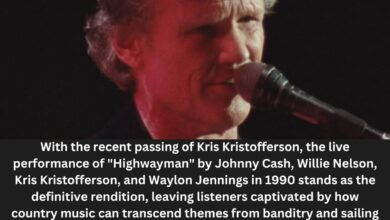Stevie Wonder’s “I Was Made to Love Her” – A 1967 Soul Anthem That Defined an Era
In 1967, Stevie Wonder released “I Was Made to Love Her,” a soulful track that became a defining moment in his early career. The song showcased Wonder’s emotive vocal delivery and harmonica skills, propelling it to No. 2 on the Billboard Pop Singles chart and securing the top spot on the R&B chart for four non-consecutive weeks. This success solidified Wonder’s transition from a child prodigy to a mature artist with enduring appeal.
Born Stevland Hardaway Judkins in Saginaw, Michigan, in 1950, Stevie Wonder faced the challenge of blindness from birth. Despite this, his innate musical talent was evident early on. By the age of 11, he had signed with Motown’s Tamla label, earning the moniker “Little Stevie Wonder.” His early years at Motown were marked by a series of hits that highlighted his versatility as a musician and vocalist.
The inspiration behind “I Was Made to Love Her” is deeply personal. Wonder co-wrote the song with his mother, Lula Mae Hardaway, along with Motown collaborators Sylvia Moy and producer Henry Cosby. Hardaway’s contribution was particularly significant; drawing from her own life experiences, she infused the lyrics with genuine emotion and authenticity. This maternal collaboration added a unique depth to the song, resonating with a wide audience.
The recording process of “I Was Made to Love Her” took place at Motown’s Hitsville U.S.A. studio in Detroit. Producer Henry Cosby aimed to capture the raw energy of Wonder’s live performances. To achieve this, he invited people from the street into the studio, creating an impromptu audience to inspire Wonder. This approach resulted in a dynamic and spirited recording, with Wonder’s passionate vocals complemented by his harmonica and the distinctive clavinet. The Funk Brothers, Motown’s legendary house band, provided the instrumental backdrop, with James Jamerson’s intricate bassline standing out as a highlight.
Upon its release, the song received widespread acclaim. Its blend of heartfelt lyrics and infectious melody resonated with listeners, leading to its impressive chart performance. Beyond commercial success, the track marked a pivotal moment in Wonder’s artistic development, showcasing his ability to convey deep emotion through his music.
Culturally, “I Was Made to Love Her” played a role in bridging musical genres and audiences. Its soulful essence appealed to R&B enthusiasts, while its universal theme of enduring love attracted pop music fans. This crossover appeal exemplified Motown’s mission to create music that transcended racial and cultural barriers, bringing diverse audiences together through shared musical experiences.
For Stevie Wonder, the success of this song was transformative. It reinforced his status as a leading artist in the music industry and opened doors to further creative exploration. The collaboration with his mother not only strengthened their personal bond but also highlighted the importance of family and personal experiences in artistic expression.
The song’s influence extended beyond Wonder’s own career. Its innovative fusion of gospel, R&B, and pop elements inspired other artists to experiment with genre-blending in their music. The track’s success demonstrated the commercial viability of such hybrids, encouraging musicians to explore diverse musical landscapes.
Over the years, “I Was Made to Love Her” has been covered by various artists, each bringing their unique interpretation to the classic. Notably, the Beach Boys included their rendition on their 1967 album “Wild Honey,” infusing the song with their signature harmonies and West Coast vibe. These covers attest to the song’s versatility and enduring appeal across different musical genres.
At the time of the song’s release, Stevie Wonder was navigating the challenges of transitioning from a teenage sensation to an adult artist. The success of “I Was Made to Love Her” provided a platform for this evolution, allowing him to showcase his maturity and depth as a musician. This period also marked increased collaboration with his mother, strengthening their creative partnership.
Decades later, the legacy of “I Was Made to Love Her” remains intact. The song continues to receive airplay on classic soul and R&B stations, and its influence is evident in the works of contemporary artists who draw inspiration from Wonder’s emotive style and innovative musicality. The track stands as a testament to the timeless nature of genuine artistry.
In retrospect, “I Was Made to Love Her” not only solidified Stevie Wonder’s place in music history but also showcased the profound impact of personal experiences and familial bonds in the creation of art. The song’s heartfelt lyrics, combined with its soulful melody, continue to resonate, reminding listeners of the universal and enduring power of love.



